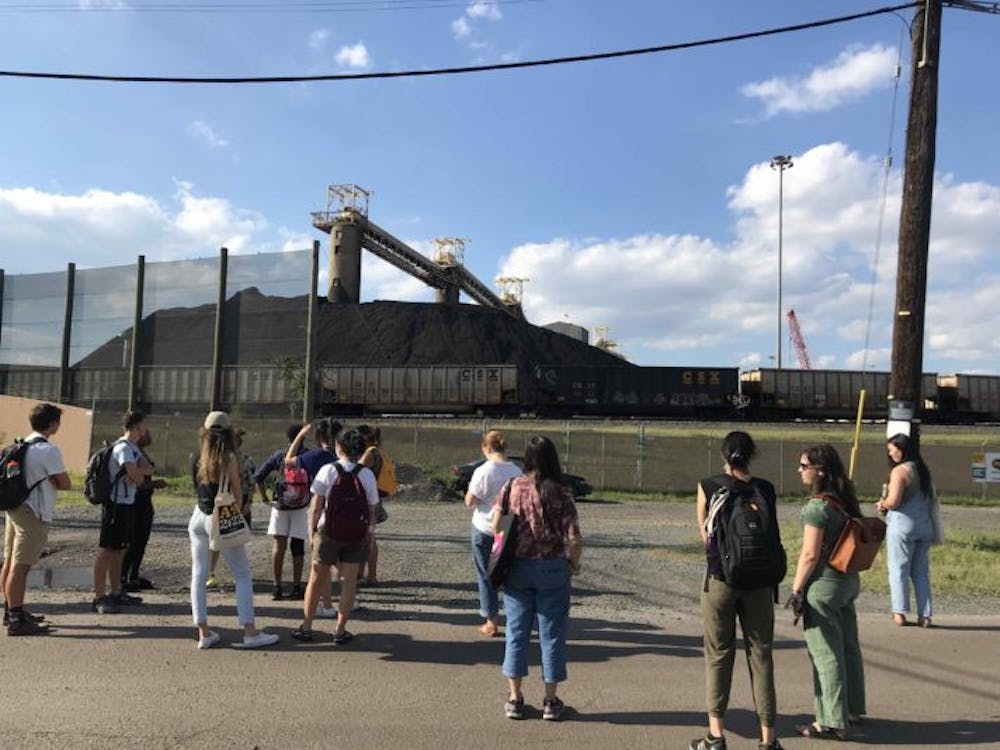Tomisin Longe is a senior studying Anthropology and Psychology. In an interview with The News-Letter, they discussed their journey at Hopkins, including experiences in Professor Anand Pandian’s two-semester course “Development without Displacement: Sustainable Design Practicum.”
The News-Letter: What brought you to Hopkins?
Tomisin Longe: I was very interested in Hopkins because I wanted to do research in biological sciences a lot in high school, and I was leaning more to the biological sciences and psychology side. Hopkins has an incredible reputation for being an incredible research and medical school, which attracted me not only to Hopkins but to the U.S.
N-L: How did you become interested in studying anthropology?
TL: [While] taking the intro Biology classes and Chemistry classes, I realized I did not enjoy the hard sciences. At least, I didn’t want to spend all my time doing hard sciences, so I switched into Psychology. Anthropology just came as a way for me to more practically explore a Psychology degree because I wanted to work with people, and Anthropology allows that.
N-L: What is the Sustainable Design Practicum?
TL: Essentially, it's a class that gets run every year by Professor Anand Pandian in the Anthropology department. The way the class is structured, at least for this semester, is that we're working with residents in Curtis Bay to help them fight against environmental injustices that they're faced with over the course of the semester and furthermore, into the spring [semester].
N-L: What kinds of environmental injustices are residents of Curtis Bay currently facing?
TL: Due to the history of Baltimore, segregation and the history of redlining and greenlining, essentially what's happened is that Curtis Bay is currently sitting in a location in Baltimore that corporations and officials are using as what we term a “sacrifice zone.” The kinds of things you wouldn't want in your own home or community, such as incinerators, water waste treatment plants, coal mines [and] anything that can lead to pollution, are essentially put in Curtis Bay.
N-L: What specifically do students in the Sustainable Design Practicum do to fight these injustices?
TL: [Right now] we're working with archival research. We’re looking at histories of injustice. For example, something that we looked at is how many corporations pollute the Patapsco River connected to the Inner Harbor. So, we're looking at all those forms of environmental injustice and how they've impacted the residents of Curtis Bay and what initiatives we can fight for with the members of Curtis Bay to ensure those injustices aren’t continued and perpetuated.
N-L: How have you been enjoying the class?
TL: In my opinion, this class encapsulates everything that I wish college was but isn't. I feel like in university, we spend a lot of time indoors and taking notes and learning in a very robotic academic setting. This class essentially takes the academic setting out of the academic. We spend a lot more time doing hands-on things and actually talking to people and getting more ground experience in the community. I've really enjoyed that change from the last three years of my academic career. Especially being an Anthropology major, actually being able to talk to people and help them make the changes that they want to make and want to see, as well as just getting around in Baltimore, is great.
N-L: Do you think community outreach courses like the Sustainable Design Practicum are effective ways for Hopkins students to engage with the Baltimore community?
TL: The idea of taking a classroom environment and taking it outside the classroom and into the Baltimore community in theory is a very good idea. In practice though, that's where I feel Hopkins has the potential to not do great because there's this notion of Hopkins being very much a bubble community. The first step in combating that is getting outside the bubble, which is getting into the environment. But if we don't take the proper steps in how we choose to engage with the community, then it ends up being what it currently is of just encroaching.
A big example is that students are seen as very temporal because we’re only usually in the area for four years and then we’re gone. The idea with that is that if you have a class that goes out into the same community every year and you have students working on whatever project with that community, and then when those students leave, [new students continue] whatever project or whatever [the] class was working on at that time. So, it's all about engaging in the community in a way that actually allows for longevity. Hopkins does have a history of not allowing for longevity in the community.
N-L: What are your future goals, and how might they connect to the work you’re doing in the Sustainable Design Practicum?
TL: I want to be a genetic counselor, so that’s where the biology was initially. With genetic counseling, as it should be with all the other healthcare professions, there's a very strong focus on advocacy in patient communication and working with patients, because we're often working with very small groups of people. In genetic counseling, there’s that focus on advocacy and working on the ground level and meeting people where they're at to provide them the care that they need. So, this class especially helps me understand how it is exactly you go about working with people that have a different history, background and way of living than you do.





